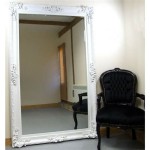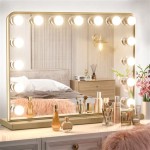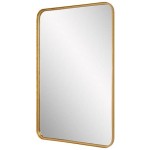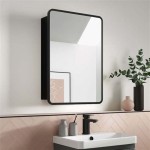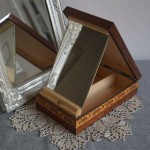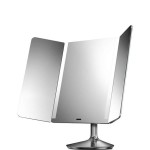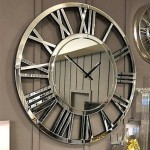Why Are Images in a Concave Mirror Inverted?
Concave mirrors, with their inwardly curved reflecting surfaces, possess the fascinating ability to produce both upright and inverted images. The inversion of an image, meaning it appears upside down compared to the object, is a direct consequence of the way light rays interact with the mirror's surface and subsequently converge or appear to diverge. Understanding this phenomenon requires exploring the principles of reflection and image formation in concave mirrors.
The Law of Reflection governs the behavior of light striking any reflective surface. This law states that the angle of incidence, the angle between the incident ray and the normal (a line perpendicular to the surface at the point of incidence), is equal to the angle of reflection, the angle between the reflected ray and the normal. This principle applies at every point on the curved surface of a concave mirror.
To understand image formation, specific light rays are often traced from the object to the mirror and then reflected. While any number of rays could be traced, three principal rays are typically used for simplicity and clarity. These principal rays are defined by their paths relative to the focal point (F) and the center of curvature (C) of the mirror. The focal point is the point where parallel rays of light converge after reflection, and the center of curvature is the center of the sphere from which the mirror is a section.
The first principal ray travels parallel to the principal axis, the line passing through the center of curvature and the vertex (the center of the mirror). After reflection, this ray passes through the focal point.
The second principal ray passes through the focal point before striking the mirror. After reflection, this ray travels parallel to the principal axis.
The third principal ray passes through the center of curvature. Because this ray strikes the mirror along the normal at the point of incidence, it reflects back along the same path, passing back through the center of curvature.
The location where these reflected rays intersect, or appear to intersect, determines the position of the image. When the object is located beyond the center of curvature, the reflected rays converge to form a real, inverted, and diminished image between the center of curvature and the focal point. "Real" signifies that the rays actually converge at that point, and a screen placed at the image location would display the image. "Inverted" indicates that the image is upside down compared to the object, and "diminished" means the image is smaller than the object.
The inversion occurs because the rays reflecting from the top of the object converge below the principal axis, while rays reflecting from the bottom of the object converge above the principal axis. This crossing of the rays leads to the top and bottom of the object being swapped in the image, hence the inversion.
When the object is located between the center of curvature and the focal point, the reflected rays converge to form a real, inverted, and magnified image beyond the center of curvature. The inversion mechanism remains the same: rays from the top of the object converge below the principal axis after reflection, and rays from the bottom converge above.
A more interesting scenario arises when the object is placed between the focal point and the mirror. In this case, the reflected rays diverge, meaning they do not actually intersect after reflection. However, if these diverging rays are traced back behind the mirror, they appear to intersect. This forms a virtual image, meaning the light rays do not actually converge at the image location. A virtual image cannot be projected onto a screen. The image formed in this case is upright and magnified.
The absence of inversion in this case is due to the diverging nature of the reflected rays. The rays reflected from the top of the object diverge upwards, and the rays reflected from the bottom of the object diverge downwards. When traced back, these extensions appear to intersect behind the mirror, but without the crossing of rays that leads to inversion.
Therefore, the inversion of images in a concave mirror depends on the object's position relative to the focal point and center of curvature. When the object is placed beyond the focal point, the converging reflected rays cause an inversion due to their crossing. When the object is between the focal point and the mirror, the diverging reflected rays, and their virtual intersection behind the mirror, result in an upright image.
Understanding the interplay between the Law of Reflection, the principal rays, and the object's position provides a comprehensive explanation for the inversion of images in concave mirrors, showcasing a fundamental principle of geometrical optics.
Objects In The Mirror Are Actually Images Article Khan Academy

Concave Mirror
Is It Right A Convex Mirror Always Forms An Inverted Image Quora
If A Concave Mirror Forms Real Inverted Image In Front Of The Then How Can We See Our Behind Like Spoon Quora
Why Can We See Our Inverted Image Inside A Concave Mirror When The Is Formed In Front Of It And Not Behind Quora
Understanding Reflection Of Light On A Concave Mirror
Can Convex Mirrors Produce Lateral Inversion Quora

The Image Formed By A Concave Mirror When At C Is Inverted And Below Axis In Diagram But How It Above Quora

What Would You Use To Obtain A Real And Inverted Image For Any Position Of An Object Convex Mirror Or Concave Lens B C
Lesson Explainer Drawing Ray Diagrams For Concave Mirrors Nagwa

